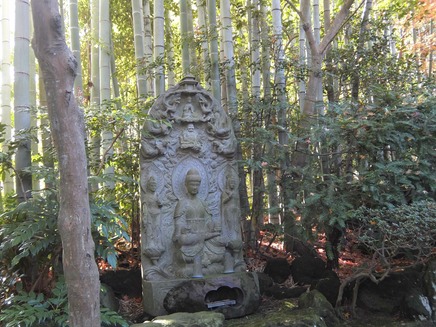
Back on the rails it was one stop back to Yokohama, then the change of lines that took us down to Kamakura, a coastal town about an hour south of Tokyo that had been the political centre of Japan, after Minamoto Yoritomo chose it as the seat for his military government in 1192. The Kamakura government went into decline in the 14th century as the focus shifted to Kyoto, but the city remained the political centre of Eastern Japan for some time.
Today, Kamakura is a popular tourist destination, sometimes labelled the Kyoto of Eastern Japan, with temples, shrines and other historical monuments as well as beaches that attract large crowds during the summer.
The historical significance stems, in part, from the fact that it sits in what amounts to a natural fortress, surrounded to the north, east and west by hills with the open water of Sagami Bay to the south. If you weren't coming by boat, before recent developments and modern engineering delivered tunnels and cuttings access over land was only possible through narrow passes, with the seven most important tagged Kamakura's Seven Entrances, or Kamakura's Seven Mouths.

Kamakura has a number of significant Buddhist temples and Shinto shrines, far too many to visit in a day, but much of the city was devastated by the Great Kantō Earthquake of 1923. The quake’s epicentre was deep beneath Sagami Bay, very close to Kamakura, and the tremors devastated Tokyo, Yokohama, and the Kantō region. The combination of quake, tsunami, and fire destroyed many sites, and what’s on view today is often a replica of what was formerly there.
We had two sightseeing options pencilled in, with the first involving a bus from Kamakura station to the vicinity of Hokokuji, where the signage on the main road was slightly misleading.
We've had the same problem before, but eventually we’ll get these things sorted out.